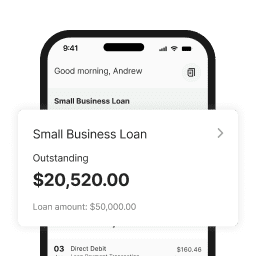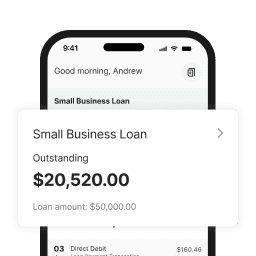The holiday season is fast approaching. Get actionable tips for managing stock, rostering staff, and protecting cash flow for the busy period ahead.
At a glance
- Holiday trading requires extra stock, additional staff, and higher upfront costs, often weeks before revenue comes in.
- The best preparation is a clear forecast of sales and expenses, supported by smart inventory planning and early hiring of seasonal staff.
- Having flexible finance in place lets you commit to key decisions and make the most of the busiest time of year.
October marks the start of the holiday rush in retail and hospitality. For Australian business owners, it’s a double-edged sword with a chance to capture the year’s strongest sales, while also creating the toughest operational and financial challenges.
The opportunity is enormous as the Australian Retailers Association forecasts that shoppers and patrons will spend more than $73 billion in the lead-up to Christmas. However, so are the pressures. Extra stock needs to be ordered weeks in advance, seasonal staff must be hired and trained, and cash flow must stretch to cover it all before the first festive dollar comes in.
Fortunately, with a clear plan to stock up, staff up, and protect your cash flow, you can make the most of the lucrative holiday season.
Start with a forecast: Map out your holiday cash flow needs
The first step is to get clear on your numbers by reviewing last year’s holiday period. Look at sales data along with higher expenses such as extra stock orders, additional wages, or increased marketing activity. Use these figures to build your projections for the weeks ahead.
By having a realistic picture of when cash will come in and go out, you can see if and when there is a shortfall, and how large it might be. This not only helps you make better decisions about when to commit to supplier orders or bring new staff on board, but it also allows you to take proactive steps to fill any funding gap.
You can use Prospa’s free cash flow forecasting template to map out your plan.
Secure your stock: How to fund and manage holiday inventory
After reviewing your cash flow, you can focus on inventory. Running out of popular items in December is a missed opportunity and can lead to disappointed customers. On the flip side, over-ordering can leave you stuck with slow-moving stock in the new year.
Start by auditing what you have on hand and reviewing last year’s sales to spot your bestsellers. These are the products or menu items worth stocking up on.
A point of sale or retail inventory system can make this process much easier, as tracking sales in real time helps you stay on top of demand. It also helps prevent overselling stock you don’t have, for example, through online orders, which can lead to delays, refunds, or last-minute supplier scrambles.

Donna Skavlos, owner of Donna’s Beauty Cottage in Sydney, knows how demanding the holiday season can be. “I spend around $15,000 at this time of year on stock, and most of that isn’t in my account, so it can be stressful finding the funds to pay for it,” she explains.
To bridge the gap, Donna turned to Prospa. “It was the easiest process I’ve ever experienced. I uploaded my bank statements, and the money was there within 24 hours. It was so quick and easy.”
Your plan for hiring and rostering seasonal staff
The holiday rush puts just as much pressure on your people as it does on your shelves. To manage the surge in customers, start the hiring process early so you can secure the best talent before demand peaks.
Write clear job ads that highlight the busiest weeks and the type of shifts you need covered. Be upfront about weekend and evening availability to avoid last-minute shortages. Keep interviews focused but efficient, so you can move quickly from shortlisting to offers.
Writing better job ads with AI
AI can be a huge time saver when drafting seasonal job ads quickly, as long as you give it the right input. Follow these simple steps to get the best results:
- Start with a description of the role in your own words. Include all responsibilities and tasks you want them to handle
- List the character traits and skills that matter most, such as reliability, composed, or adaptable. Often these are more important than the actual experience
- Highlight what tangible benefits you can offer beyond pay, like flexible shifts, staff discounts, or on-the-job training that builds useful customer service experience.
- Use an AI writing tool to pull this together into a polished draft
- Review it carefully to ensure it reflects your voice and gives a realistic picture of the role.
- Share the final ad on jobseeker platforms and your own social channels to reach the widest pool.
Employees get different entitlements depending on their type of employment, so it is worth reviewing the Fair Work Ombudsman’s overview of employee types before bringing people on. Once staff are on board, plan rosters well in advance and communicate them early. This helps your team prepare and gives you a chance to spot gaps before they cause problems.
Remember that payroll costs rise from the first shift. If you don’t have funds set aside, flexible finance options can help you meet the increased wage bill without putting strain on your cash flow.
Finding the right funding for the festive season
Even with thorough planning, preparing for holiday trading still means committing money before revenue starts flowing. A short-term business finance facility can provide the breathing room to make stock and staffing decisions with peace of mind.



A business line of credit is one of the most flexible options. It gives you access to funds when you need them, whether that’s for inventory, payroll, or other seasonal expenses. You only pay interest on what you use, which makes it well-suited to the ups and downs of the holiday period.
A fixed working capital loan can also help, although it is usually more useful for larger, one-off expenses like refurbishments or major equipment. Even if you do not need all of the funds immediately, you pay interest on the full amount from day one, so it is less efficient for short-term holiday pressures.
You can learn more about how a business line of credit works and see if it is the right fit for your festive season plans.
Boost your bottom line: Simple holiday marketing ideas
Once your stock, staff, and funding are sorted, the final step is making the most of the increased traffic and customer interest. A few simple, low-cost marketing tactics can go a long way toward turning browsers into buyers.
Think about running your campaign in two waves. Start early with gift guides or bonus offers to capture organised shoppers, then shift to urgency messaging in December to appeal to last-minute buyers.
Make gifting easier wherever you can. Highlight bestsellers and offer filters like “Gifts under $50” to help shoppers choose faster. Simple touches like gift-wrapping, flexible pickup, or digital vouchers can save time for busy customers.
Take advantage of social media. Running a short contest or giveaway can create buzz, encourage shares, and draw new customers into your store or venue.
Collaborations can also expand your reach. Partner with a complementary business to create a limited holiday bundle or cross-promotion that benefits both of you.
And do not forget your loyal customers. A personalised email campaign with a holiday offer or early access to promotions can drive repeat visits at a time when people are actively shopping.
Set up your business for success
Preparing for the holiday rush does not have to be overwhelming if you focus on these five steps:
- Build a clear forecast of sales and expenses.
- Make smart decisions about stock.
- Hire and roster the right seasonal staff.
- Create a funding buffer to cover the gap.
- Finish strong with some clever marketing ideas.
Get these right and your business can turn the silly season into a time of success rather than stress.
See how Prospa can keep you in control of your cash flow with a business line of credit.








